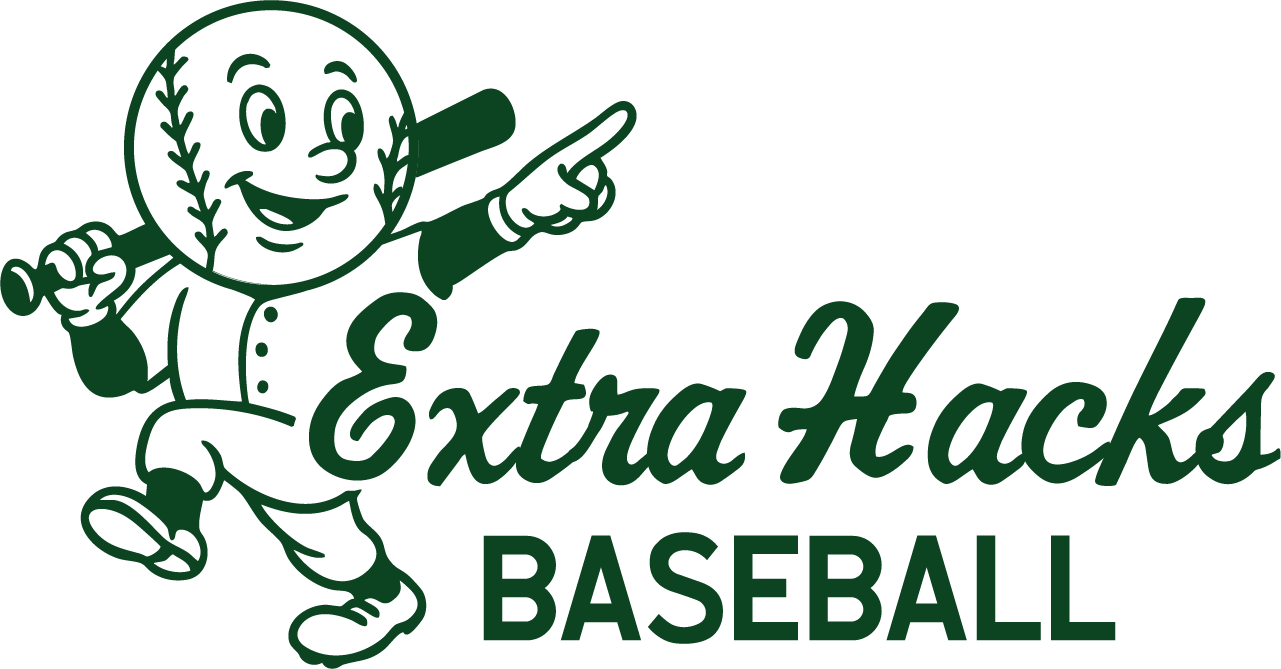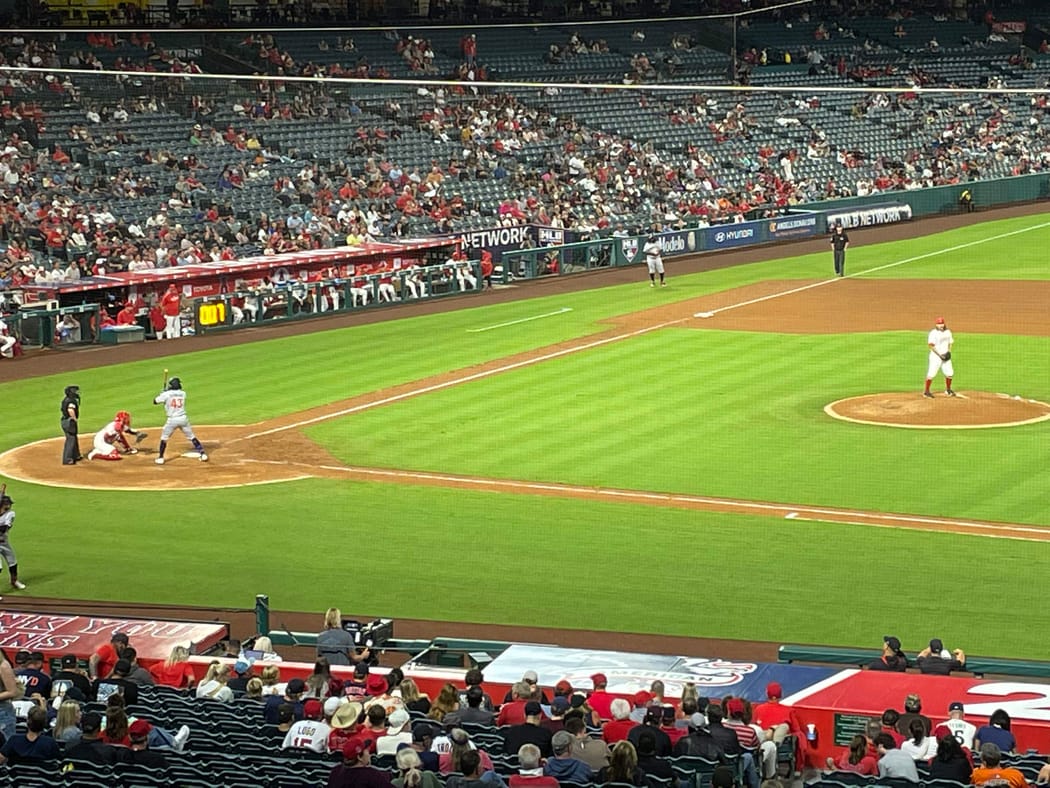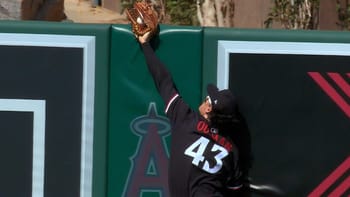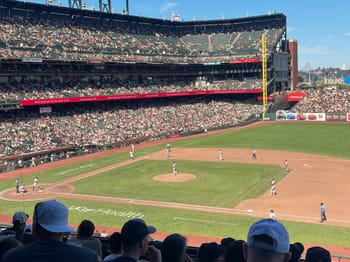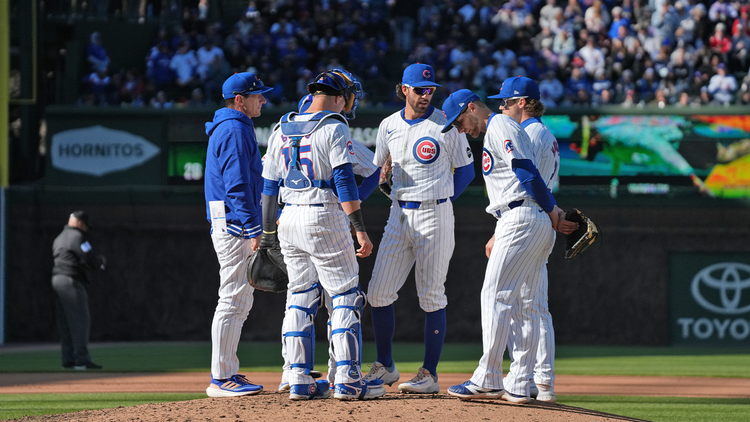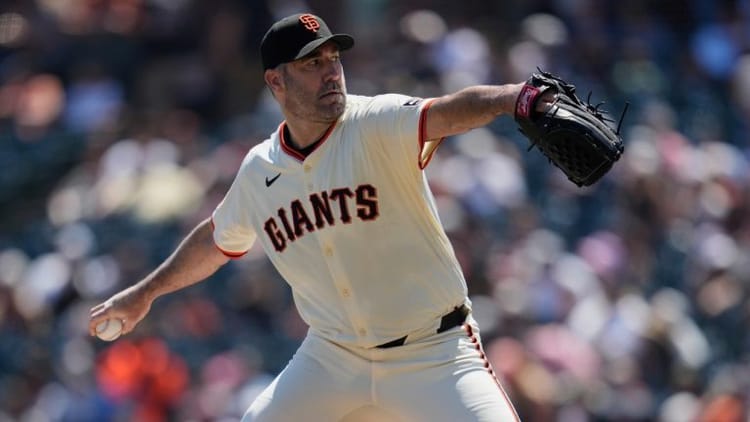Another Lopsided Game
I've now attended two games in a row that have seen position players come in to pitch. The Angels boat raced the Twins on Tuesday night to the tune of a 12-2 win. Obviously the highlight for me was getting down on the field for batting practice and seeing Luke Keaschall, who played on the 2020 grad CCB team I managed.
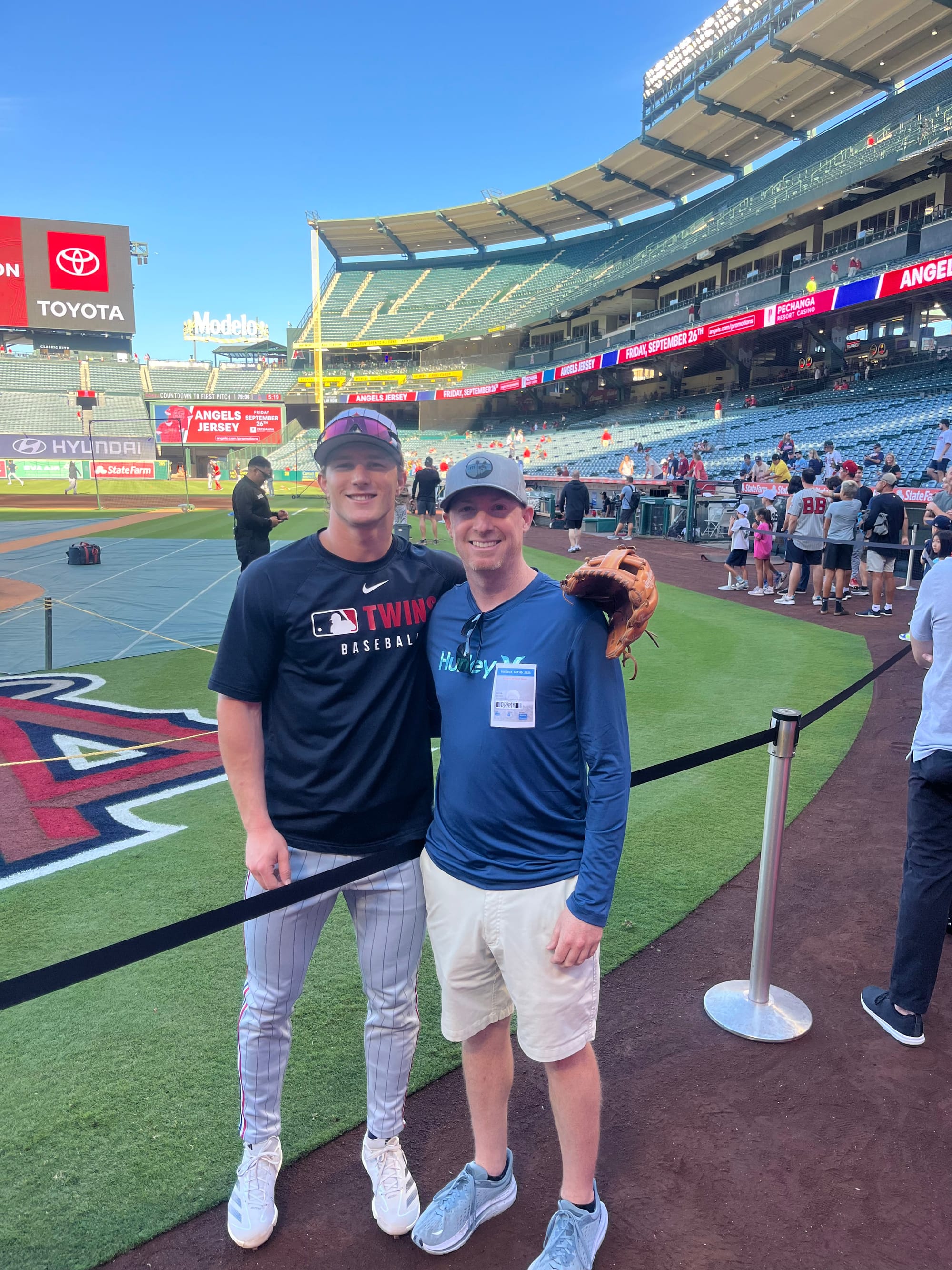
Great to see him and a huge thank you for getting us down on the field for pregame. Despite the lopsided game, there are always lessons to learn. Let's get into those below.
Kyle Hendricks Dominates with Precision
Kyle Hendricks is a perfect example of how pitchers can get you out without throwing 95 mph. In fact he doesn't even throw 90mph at this point in his career. Last night his sinker topped out at 87mph. He was able to complete 7 shutout innings, while allowing just 5 hits and a walk and struck out 6 Minnesota hitters. It only took him 80 pitches to complete those 7 innings. His changeup was his most effective pitch and he was confident in throwing it to both left handed and right handed hitters. At one point we looked up at the score board and he had thrown 4 balls in 27 pitches. That's competing in the strike zone! Here's a look at just how much some of his pitches are moving -
Things to watch for in the video -
- Radar gun - nothing over 86mph here
- Movement in pitches, specifically the change up
- How off balance the hitters are in every swing, nothing hit on the barrel
- Pitches are never WAY out of the strike zone
Hitter Lesson
Hitters will tell you, when you get a guy that can mix speeds, move the ball in both directions, and put the ball exactly where he wants it, it's not a comfortable at bat. He had some really good hitters in knots all night long. As hitters, what we can learn from this is that you really need to have a plan facing the crafty guys. You need to be stubborn to an approach and not miss the pitch you're looking for, because you'll be lucky to get it once in the at bat.
Pitcher Lesson
Pitchers, this might be tough for you to hear, but not everyone's body is going to be physically capable of throwing a ball 95mph. It is much more within your control to learn to mix speeds, throw the ball with command, and learn to move it away from and into hitters. In tonight's game, one guy topped out at 87mph and one guy topped out at 97mph. The guy who topped out at 97mph (Zebby Matthews) had a nasty curveball and slider, and he was the loser. It's not that he was bad at all, but he was outdueled by a veteran in Kyle Hendricks who can't throw the ball 90mph anymore. I promise, if you can learn to PITCH, you will be rewarded with more innings by your coach. You will eventually get your man body and your velocity will naturally increase. This isn't to say you don't need to work at getting stronger. It's to say that you should put an emphasis on becoming a PITCHER and not just a THROWER.
Small Ball
Weirdly enough, we saw 2 sacrifice bunts in the 1st inning. Not sure how much I loved the call on either of them. Both times the 3rd basemen are in so the element of surprise isn't really there and you're not likely to get a hit. It was the two hitter Austin Martin for the Twins and the three hitter Zach Neto for the Angels.
Martin vs. Hendricks - Top 1, Runner on 2nd, 0 outs
Matthews vs. Neto - Bottom 1, Runners on 1st and 2nd, 0 outs
This should send a message to all hitters - if you want to hit at the top of the lineup, you're going to need to have at least a drag bunt in your pocket. If big league hitters with 25 homers are going to do it, then what makes you exempt from dropping one down?
Unfortunately, neither team got the run in with less than two outs. The Angels did end up scoring 3 in their half because they got a two out hit and then ran a 1st and 3rd play (see below).
Hitting off Time
This is something we talk about at our in person sessions all the time - learning to hit off time is the most important skill you can have as a hitter. Everyone can hit when they're perfectly timed. What do you do when you're expecting a fastball and you get a breaking ball causing your foot to land a little early?
Byron Buxton has had his best season as a Twin and this is part of the reason why. He gets out in front of this pitch, but stays on plane long enough and keeps his hands back long enough to still hit a semi line drive that falls in front of an outfielder.
Buxton vs. Hendricks, Top 3, Runner on 1st, 1 out
Home runs make for sexy highlights. But you cannot hit 25 homers and hit .190 and stay on a Major League roster. I thought this was a great example of a guy who has had a lot of swing and miss in the past making an adjustment to bump his average (and therefore on base percentage) up a bit.
1st and 3rd Steals
We are going to do some posts around 1st and 3rd plays in the future. In the big leagues you generally don't see a ton of steals 1st and 3rd for a few reasons. One, Major League infielders and catchers have strong enough arms to throw out the guy at 2nd and then turnaround and throw the guy out at home. Another reason is, you don't always want to open 1st base because it will give the first baseman more range and also alter the way the hitter gets pitched (he gets less pitches to hit with the open bag).
The lesson defensively is that you always want to get an out. We did a post about when to play the infield in and a point of emphasis in that was avoiding big innings. This was the play from last night -
Here you see the Angels put on a steal where the Twins throw down. It's going to be a bang-bang play at 2nd, but Luke decides to try and get the out at home. You see him come in front of the bag to catch the ball and make the throw home. I think what happened here is that throw takes him a little too far to his left to stay at the bag. He'd have to work around the base runner to catch it if he let's the ball get all the way back to the depth of the base. The play at the plate ends up also being a bang-bang play, but the Twins end up getting no outs and the trail runner ends up advancing all the way to 3rd on the throw.
This was run on an 0-2 count. You're going to see more of these types of plays run with two strikes and two outs because the odds of the hitter getting a hit with two strikes at all levels of baseball is really bad. Major League hitters are hitting in the .100's with 2 strikes this year. Rengifo also got a great pitch to run on (slider below the zone).
Summary
My second ugly game in a row. Even when a game is ugly, there are plays that we can learn from. The biggest takeaway from tonight was how effective you can still be without lighting up the radar gun. Everyone wants to chase velocity, but the fact of the matter is rushing that is going to get you hurt. There are other ways to make yourself better while you build your strength and velocity at a normal pace. As a coach, when someone wants to send me a pitcher, my first question is never "how hard does he throw?". One hundred percent of the time it's "how well does he compete in the strike zone?" Learn to PITCH and not just to THROW.
